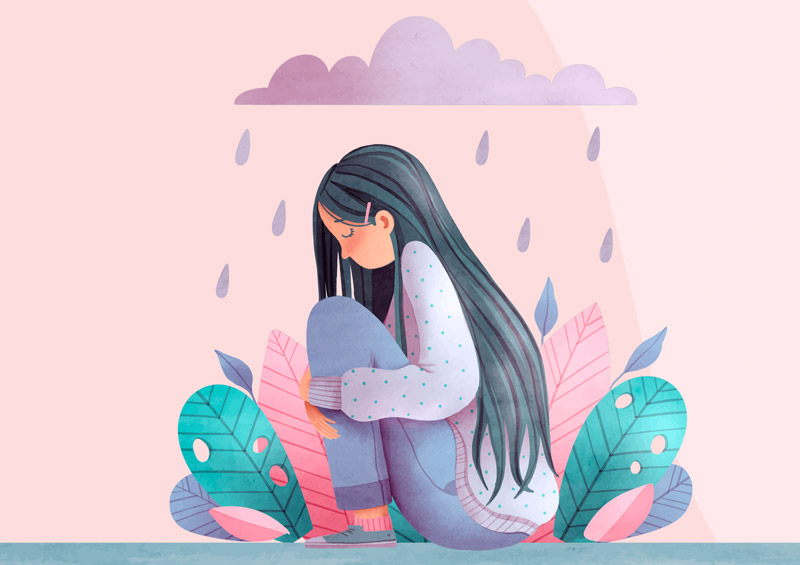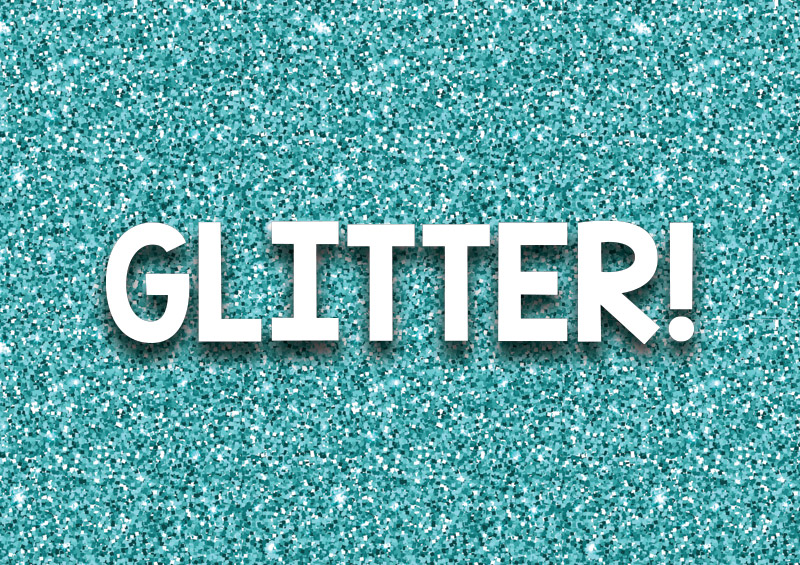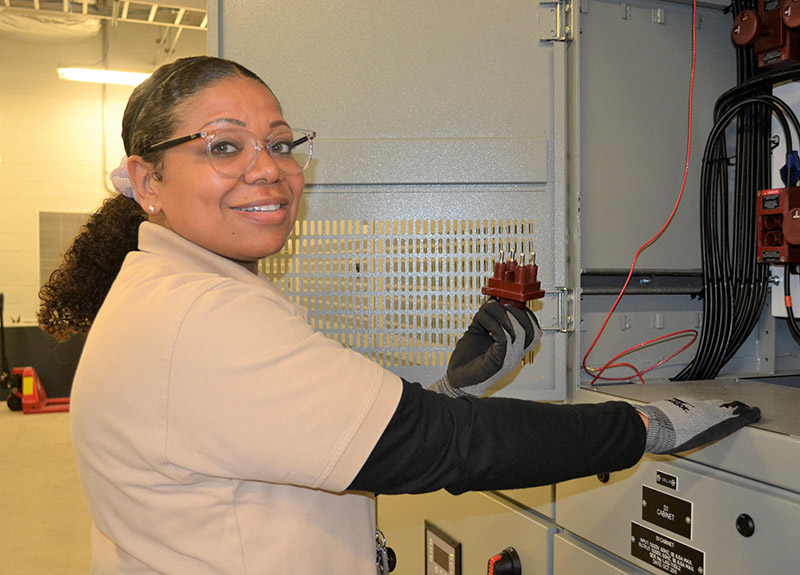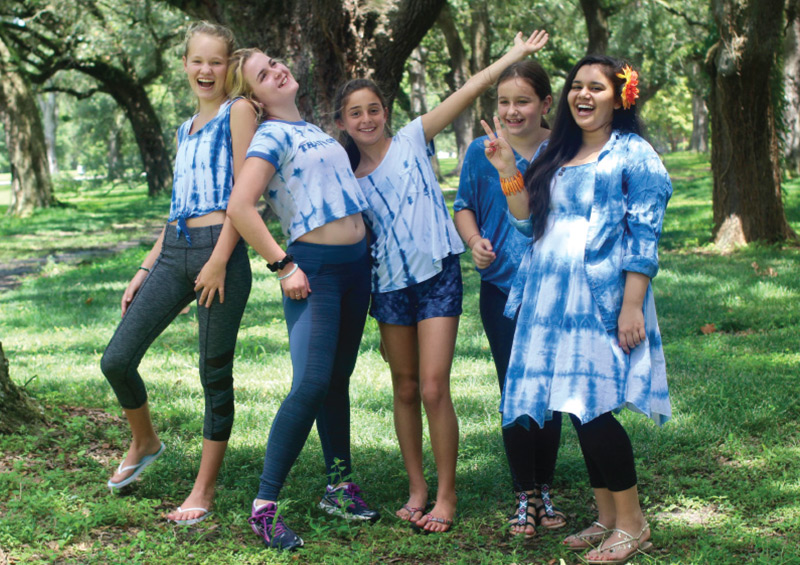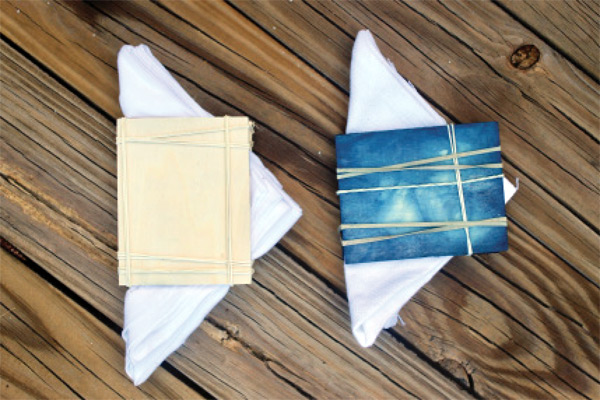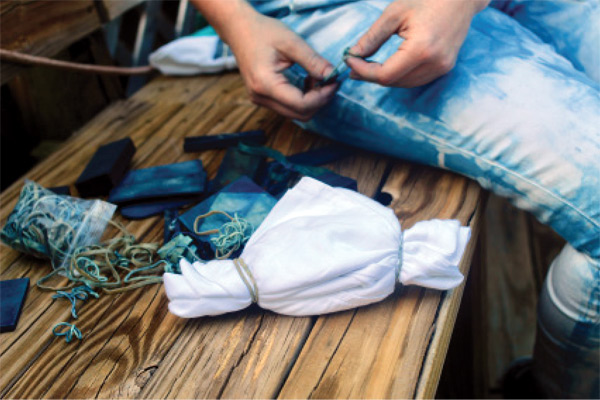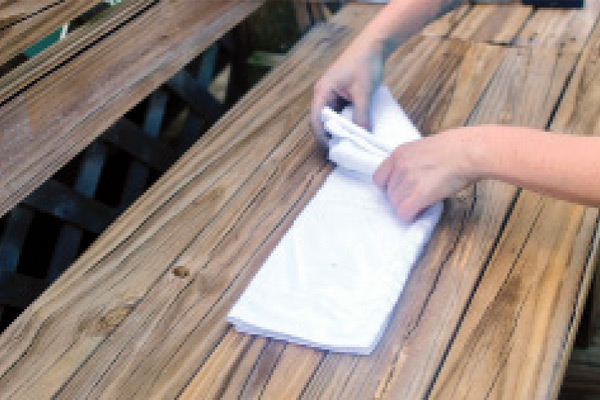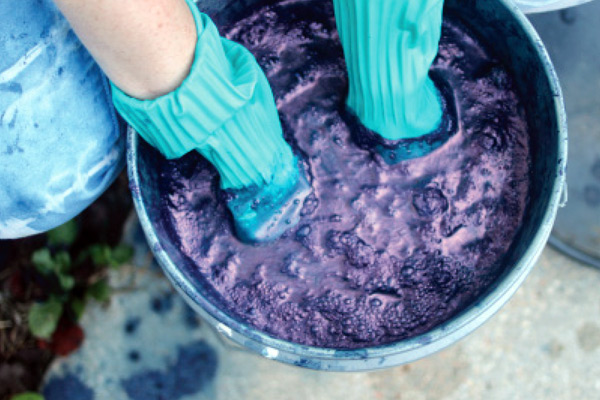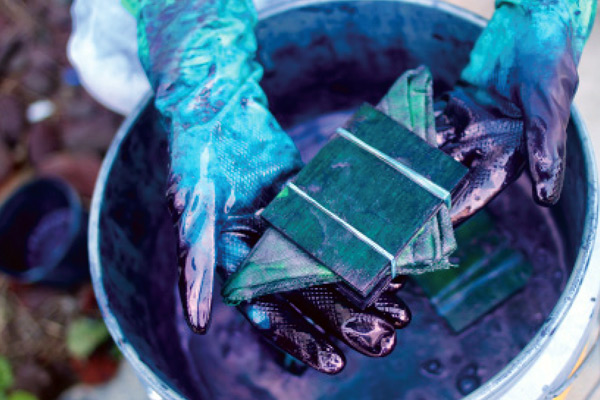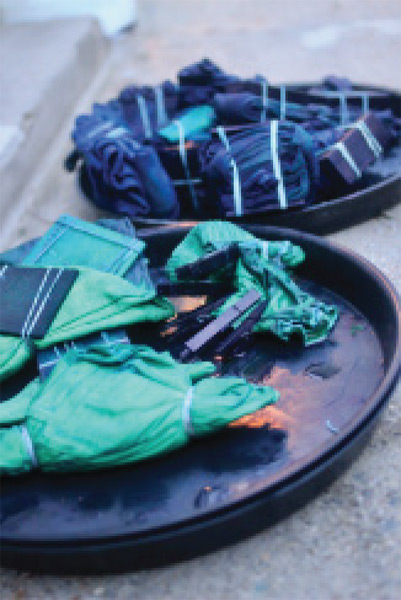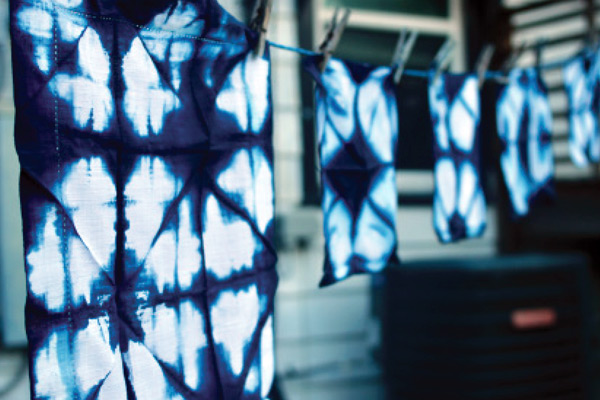Step 3 – Prepare Your Indigo Vat Outside: Shibori is ideally an outdoor activity so hopefully you have some space on a driveway, sidewalk, or backyard (check the weather first to make sure it’s not supposed to rain!). Cover your dye zone with a drop cloth or tarp if you don’t want to risk staining the ground. And since you don’t want to stain your favorite outfit, wear an old t-shirt or something you won’t mind getting a little messy.
Follow the instructions on your shibori kit to set up the vat. You’ll start by filling the 5-gallon bucket with 4 gallons of warm water. Dump the kit’s contents into your bucket: indigo powder, a reducing agent, and soda ash. The kit makes it super simple since everything is already measured out. Gently stir the vat, and once the dye is well mixed, cover it with a lid for at least an hour.
Check on the dye later—it should resemble a bubbly witches’ brew. That’s how you know it’s ready!
Step 4 – Quick Rinse: Once you’ve folded and rubber-banded all your items, give everything a quick rinse with cold water. Squeeze out any excess water. You want everything to be a little damp when it goes into the bucket; this will help absorb the indigo dye.



